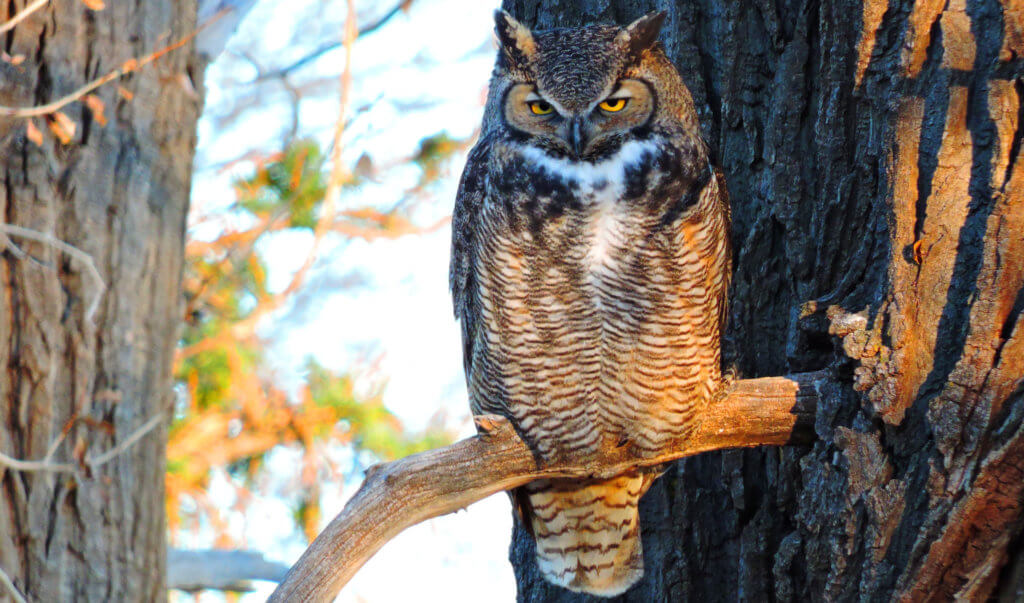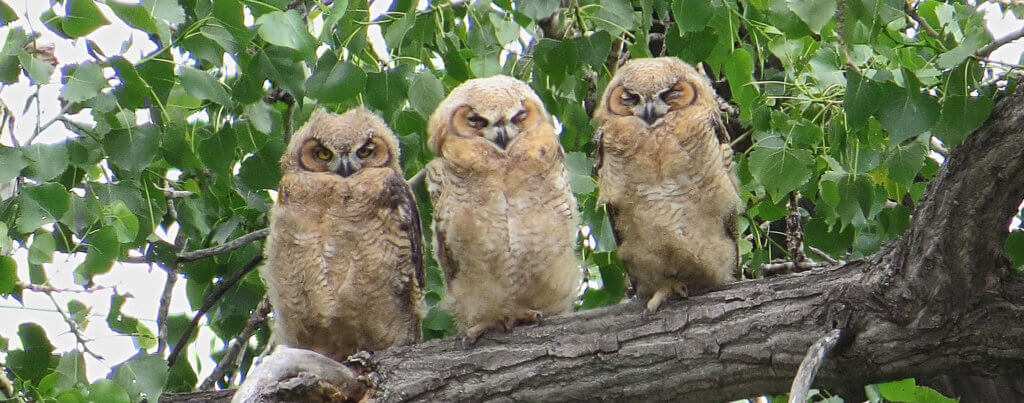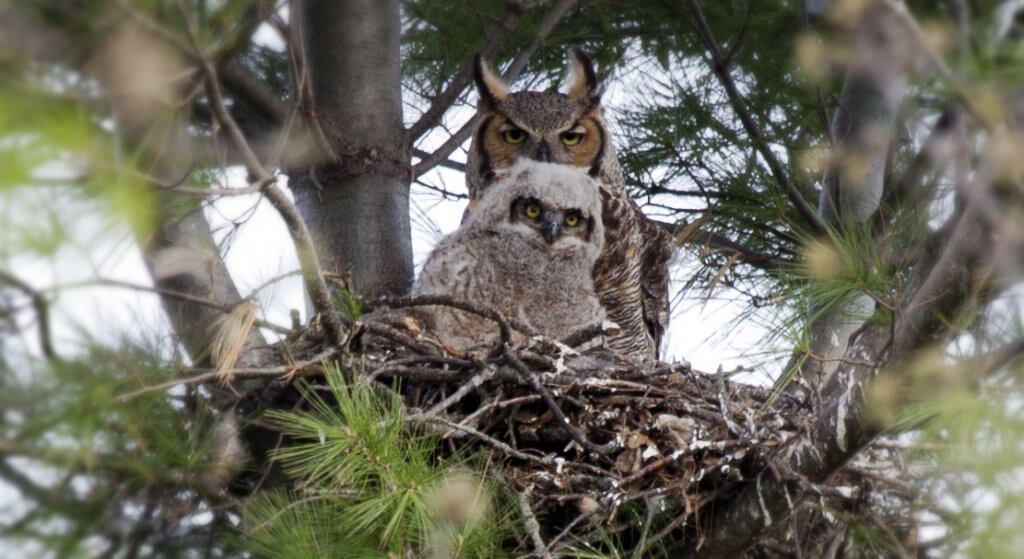by Thurston Elfstrom
Since moving back to Missoula in 2008, my wife and I have enjoyed fairly regular sightings of Great Horned Owls in and around our neighborhood.

Photo by Patrick Myers/NPS, CC 2.0
Up until this point, my experiences with Great Horned Owls tended to be more auditory—infrequently hearing the stray hoo, hoo hoot now and then, most often as I was taking my fly rod apart and trekking back to my vehicle after an evening on the river.
But starting in the fall of ’08 I was more regularly treated to not only the calls of Great Horned Owls, but the spectacle of spotting them sailing overhead, silhouetted in a tree, or perched on a roofline.
The reason for this good fortune is that we are lucky to be close neighbors with a mating pair of Great Horned Owls.
Now, I’ve long been fascinated by the transitional zones of urban, suburban, agriculture, and forest—how native species adapt to and colonize (or refuse) these spaces. And upon discovering our pair of Bubos, I was thrilled at the chance to observe them and get to see how they make their living in such a heterogeneous and disturbed ecosystem.
So the first thing I noticed about Great Horned Owls is how much I don’t notice them most of the time.
Now, I’m not the world’s greatest birder by any stretch. I also know there are folks with plenty of skill in tracking and observing Great Horned Owls and other owl species. I’ve even counted myself as fortunate to see Great Grey and Snowy Owls. But for a casual and opportunistic birder like me, owls are generally a bit more of a challenge when it comes to observing them in their habitat.
There are lots of birds in our neighborhood and the surrounding fields off of Mullan Road. Depending on the time of year, our little corner of the Missoula Valley is home to plenty of predators like Red-tailed Hawks, Northern Harriers, and American Kestrels. And there are also lots of other great avian residents: Bohemian Waxwings, Canada Geese, Mallard Ducks, American Goldfinches, Calliope Hummingbirds, Killdeer, Great Blue Herons, Red-winged Blackbirds, Northern Flickers, and Eastern Kingbirds. And of course there are plenty of American Robins, magpies, starlings, and doves. They are all ubiquitous, and if you can’t see them by simply walking out the front door, you can usually track them down in a matter of a few minutes with little or no difficulty.
But this is just not the case with Great Horned Owls. They’re masters of silence and stealth. From the whisker-like, sound-muffling feathers that line the edges of their wings to their crepuscular and nocturnal activities, they’re just really, really good at keeping themselves invisible and silent. Oh, and that patterning on their body feathers, tail, and wings—they dissolve perfectly into so many different species of trees. Particularly the big black cottonwoods that line lower Grant Creek near our home.
Certainly all of our sightings of the owls have been random luck. We just happened to be looking in the right direction at the right time. Of course we are aided by the fact that Great Horned Owls are not migratory, tending to spend their lives in a single territory year-round. So once you know there are Great Horned Owls around, some persistence in observation will usually yield their nest site.

Photo by Jim Kennedy, CC 2.0
Such was the case a few years ago. Some friends and neighbors revealed that they knew the location of the owls’ nest cavity. Bingo! We were excitedly expecting to observe the owls become parents again in early 2016. We couldn’t wait to see their cute owlets through our binoculars! However, before our owly neighbors got a chance to lay their clutch, the tree was damaged by the power company. The result: our avian friends deemed that nest site was no longer suitable for familial purposes.
But remember that little part about Great Horned Owls living their lives in a single territory? That means that they are still our neighbors. And although we don’t know where the new nest site is (it could be anywhere on a two- to three-kilometer stretch of Grant Creek, or in some large Douglas-firs or ponderosa pines), we still see and hear them on a regular basis, unexpectedly gliding above us in the autumn twilight, and making their low hoo, hoo hooting calls in early spring.

Photo by John Kees, CC 3.0












